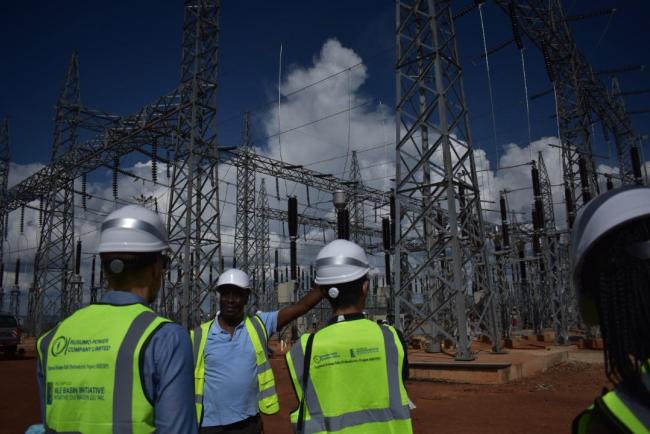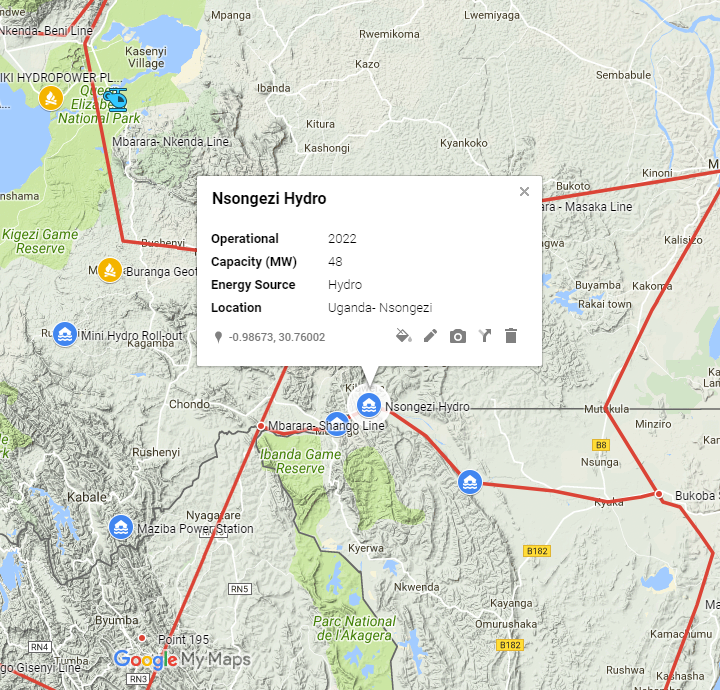
Electricity is not a natural resource, and hence, is not freely available for use, therefore, it has to be produced with the help of other resources such as water. Electricity is an essential part of modern life and is important in the Nile Basin for lighting, heating, cooling, etc.
Sharing of limited resources, reducing overall power generation costs and maximising on available water resources are the key drivers behind transboundary power generation. Rivers mark the boundaries of most Nile Equatorial Lakes Countries and many of these have potential sites for power generation. At present, access to power averages at 64% in the Eastern Nile and 33% in the NEL region (International Energy Agency, 2019). Access to electricity is a priority for the Nile Basin region’s economies because it is a prerequisite to poverty reduction and economic growth.
NELSAP has identified and faccilitated investment in transboundary power projects that bring clear mutual and sustainable benefits to the countries. The 80MW Regional Rusumo Falls Hydroelectric Project that is shared between Burundi, Rwanda and Tanzania is a great example of countries pooling resources together to generate power for mutual benefit of all.
What is a feasibility study?
A feasibility study is an assessment of the practicality of a proposed plan or project. This study analyses the viability of a project to determine whether the project or venture is likely to succeed. The feasibility study determines if the power interconnection project gets the green light by identifying roadblocks in the beginning of the planning phase. There are many essential factors to consider, such as location, proximity to utilities, site layout, and cost, to name a few.
East Africa Community (EAC) System Master Plan of 2012
The East Africa Power System Master Plan 2005, also known as Strategic/Sectorial, Social and Environmental Assessment (SSEA) of Power Development options in the Nile Equatorial Lakes Region guides this project.
This project between Uganda and the Democratic Republic of Congo (DRC) involves the construction of the 72MW Semliki Hydropower Project to generate much-needed power to benefit communities in both countries via DRC Northern East. Identification of the site ...
Uganda-DR Congo
This project between Uganda and the Democratic Republic of Congo (DRC) involves the construction of the 72MW Semliki Hydropower Project to generate much-needed power to benefit communities in both countries via DRC Northern East. Identification of the site has already been done and a feasibility study and Environmental Social Impact Assessment detailed design is the next course of action in order for the project to commence.
The project in the Democratic Republic of Congo, the Mugomba Hydropower Project will add 100MW to the country's national grid with the help of the DRC Northern East water resource. Identification of the site has already been done and a feasibility study and Envi...
Democratic Republic of Congo
The project in the Democratic Republic of Congo, the Mugomba Hydropower Project will add 100MW to the country's national grid with the help of the DRC Northern East water resource. Identification of the site has already been done and a feasibility study and Environmental Social Impact Assessment detailed design is the next course of action in order for the project to commence.

